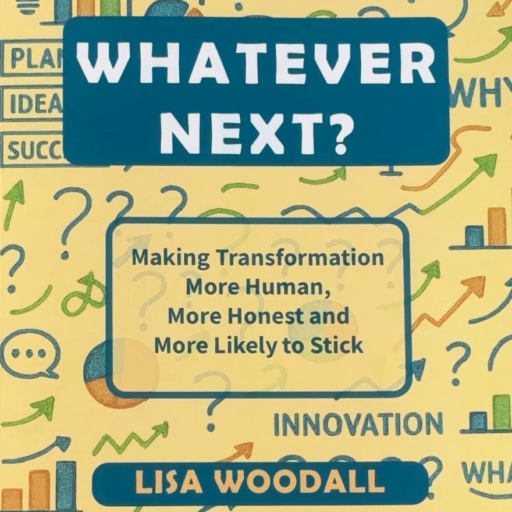Q: Why did you go down the self-publishing route?
A: I’d been running the Whatever Next? blog for years, and people kept nudging me: “You should write a book.” After talking to others, the consensus was clear—if you’re not already famous, want full control, and don’t want to wait years, self-publishing is the way.
Q: Wasn’t that daunting?
A: Not as much as you’d think. My LinkedIn network was a goldmine of advice, and between YouTube tutorials, grammar checkers, and AI helpers, the tools are all there. Talk to people, learn the ropes, and have a go—that was my mantra.
Q: How did you land all those expert voices in the book?
A: Honestly? LinkedIn. I’m not a fan of networking events, but I love connecting online. Over time, I found my tribe—architects, designers, change leaders. Asking them to contribute was natural, and they said yes. Their voices give the book more depth than mine alone ever could.
Q: The back cover quote from Kate O’Neill is impressive. How did that happen?
A: I was thrilled when she agreed. Let’s just say I smiled for days.
Q: Why did you write notes with your recommended reading instead of just listing titles?
A: Because those books genuinely shaped how I think. Kate O’Neill’s work, Whynde Kuehn’s book, the Intersection team, and even anthropology reads like Sensemaking and Look—they gave me lightbulb moments. Transformation is as human and emotional as it is logical, and those books helped me see that.
Q: You’ve even got an AI declaration at the back of the book. How did AI really feature in the process?
A: AI was like a quiet co-pilot. It didn’t write the book—but it sharpened it. I used it to check grammar, tidy formatting, and test phrasing so ideas landed more clearly. It was less about outsourcing the work and more about elevating it. I wanted to be transparent about that—hence the declaration.
Q: Why was it important to have a supporting website alongside the book?
A: Because transformation isn’t static. A book captures a moment, but a website lets you keep the conversation alive. I wanted a home for updates, blog posts, videos, and resources—so readers can revisit, reflect, and keep exploring even after they’ve finished the book.
Q: How did you go about building the site?
A: I rolled up my sleeves and did most of it myself. I had an AI coach guiding me step by step, and a personal friend in the web business who gave me some practical nudges along the way. Between those two and a lot of experimenting, I managed to shape something that feels true to the book and to me.
Q: What’s been the best part of the journey so far?
A: Hitting publish. Taking the leap. Realising the stories, lenses, and lived experience I’d been writing about for years had found their way into something real you can hold in your hands.
Q: And finally… what do you hope readers get from the book?
That it makes transformation feel a little less abstract, a little more human and maybe sparks a thought, a story, or even a conversation of their own.
Q: And if they want to get a copy of the book, where do they find it?
Just pop over to the website, hit Buy, and I’ll take care of the rest.

